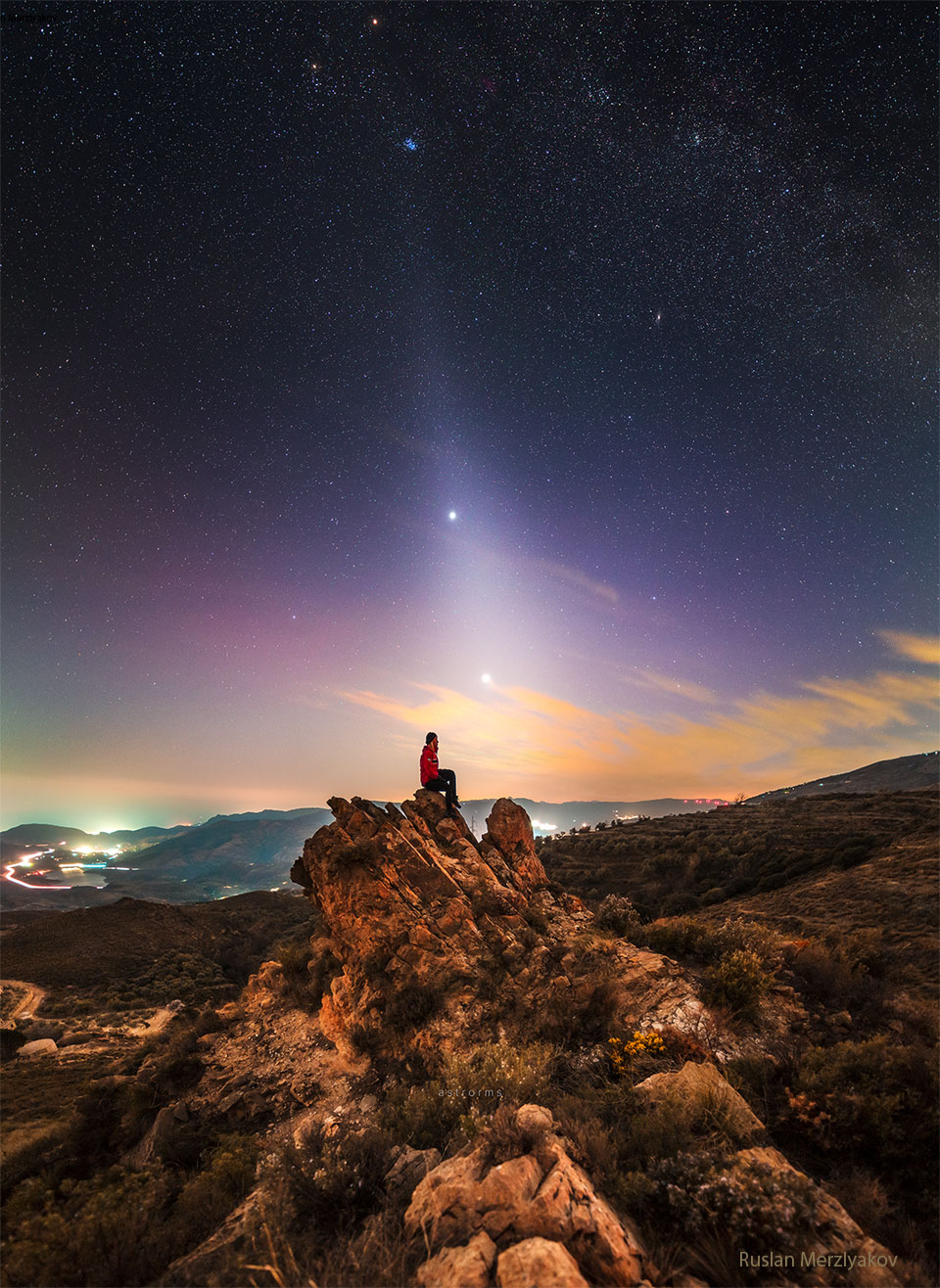2023年2月27日
Zodiacal Ray with Venus and Jupiter
Image Credit & Copyright: Ruslan Merzlyakov (astrorms)
Explanation: What’s causing that unusual ray of light extending from the horizon? Dust orbiting the Sun. At certain times of the year, a band of sun-reflecting dust from the inner Solar System appears prominently after sunset or before sunrise and is called zodiacal light. The dust was emitted mostly from faint Jupiter-family comets and slowly spirals into the Sun. The featured HDR image, acquired in mid-February from the Sierra Nevada National Park in Spain, captures the glowing band of zodiacal light going right in front of the bright evening planets Jupiter (upper) and Venus (lower). Emitted from well behind the zodiacal light is a dark night sky that prominently includes the Pleiades star cluster. Jupiter and Venus are slowly switching places in the evening sky, and just in the next few days nearing their closest angular approach.
Tomorrow’s picture: temple moon
黄道光束、金星与木星
图像提供与版权:Ruslan Merzlyakov(astrorms)
说明:从地平线伸出的不寻常光束从何而来?来自绕行太阳的尘埃。在一年中的某些时候,太阳系内围会反射阳光的尘埃带,在日落后或日出前显得格外明亮,形成黄道光的景观。这些尘埃则主要来自昏暗、缓缓盘旋掉进太阳的木族彗星。这幅在2月中旬摄于西班牙内华达山脉国家公园的主题组合图像,记录了夜晚时分,正好悬在木星(上)及金星(下)前方的明亮黄道光带。而在黄道光后方的黝黑夜空中,则有包括昴宿星团在内的吸睛天体。木星和金星在夜空中会慢慢的错身而过,并在接下来的几天里,来到视张角上最接近彼此的位置。
明日的图片:temple moon



